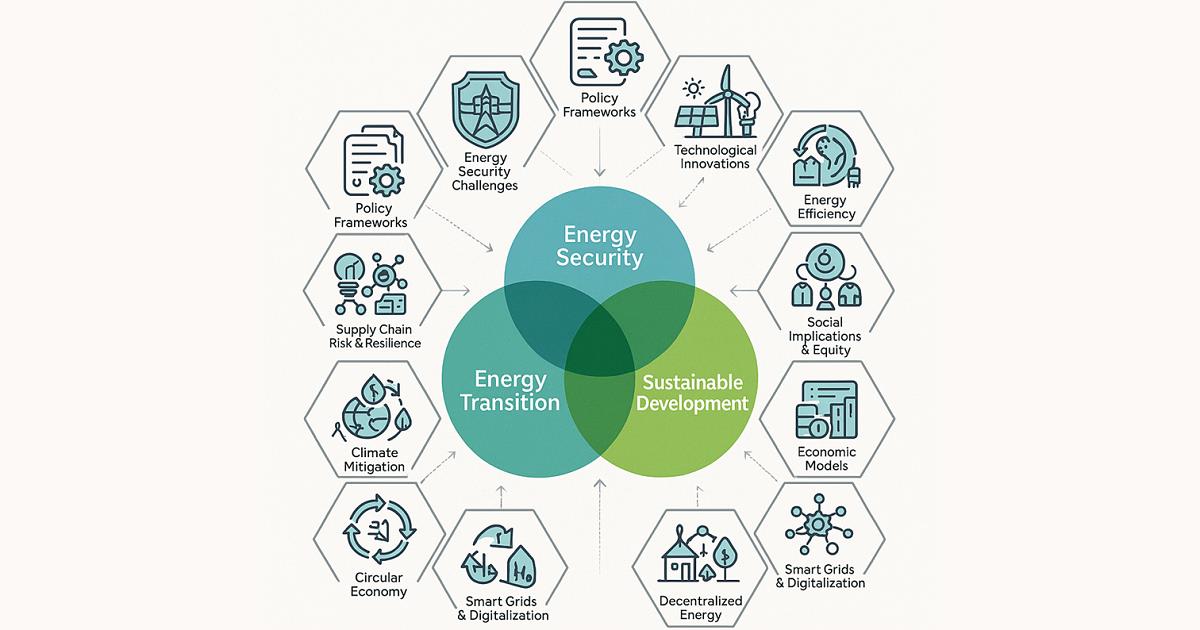Energy Security, Transition, and Sustainable Development
A special issue of Energies (ISSN 1996-1073). This special issue belongs to the section "C: Energy Economics and Policy".
Deadline for manuscript submissions: 20 January 2026 | Viewed by 1703

Special Issue Editor
Special Issue Information
Dear Colleagues,
Energy security and sustainability are pressing challenges in today’s rapidly evolving global landscape. As the world grapples with the need to transition from fossil fuels to cleaner, more sustainable energy sources, ensuring energy security has become paramount. This transition requires innovations in energy production, distribution, consumption, and infrastructure. Furthermore, achieving sustainable development necessitates an integrated approach that considers environmental, social, and economic factors, with energy playing a pivotal role in driving progress.
This Special Issue aims to showcase the latest research related to the theory, modelling, application, technology, economic, and policy innovations that address the intersection of energy security, the energy transition, and sustainable development.
Topics of interest for publication include, but are not limited to, the following:
- Energy security challenges in the context of the global energy transition;
- Policy frameworks for sustainable energy transitions;
- Technological innovations in renewable energy systems;
- Energy supply chain network risk and resilience;
- Energy efficiency improvements and their role in sustainable development;
- Climate change mitigation strategies through energy system transformation;
- The role of energy storage in supporting grid stability and energy security;
- Social implications and equity issues in energy transitions;
- Economic models and financing mechanisms for renewable energy adoption;
- Decentralized energy systems and their impact on local communities;
- Circular economy approaches in energy production and consumption;
- Smart grids and digitalization for efficient energy management;
- The role of hydrogen and bioenergy in sustainable energy futures.
Dr. Zhihua Chen
Guest Editor
Manuscript Submission Information
Manuscripts should be submitted online at www.mdpi.com by registering and logging in to this website. Once you are registered, click here to go to the submission form. Manuscripts can be submitted until the deadline. All submissions that pass pre-check are peer-reviewed. Accepted papers will be published continuously in the journal (as soon as accepted) and will be listed together on the special issue website. Research articles, review articles as well as short communications are invited. For planned papers, a title and short abstract (about 250 words) can be sent to the Editorial Office for assessment.
Submitted manuscripts should not have been published previously, nor be under consideration for publication elsewhere (except conference proceedings papers). All manuscripts are thoroughly refereed through a single-blind peer-review process. A guide for authors and other relevant information for submission of manuscripts is available on the Instructions for Authors page. Energies is an international peer-reviewed open access semimonthly journal published by MDPI.
Please visit the Instructions for Authors page before submitting a manuscript. The Article Processing Charge (APC) for publication in this open access journal is 2600 CHF (Swiss Francs). Submitted papers should be well formatted and use good English. Authors may use MDPI's English editing service prior to publication or during author revisions.
Keywords
- energy security
- energy transition
- energy supply chain
- sustainable development
- renewable energy
- energy policy
- climate change
- low-carbon technologies
- energy efficiency
- socioeconomic impact
Benefits of Publishing in a Special Issue
- Ease of navigation: Grouping papers by topic helps scholars navigate broad scope journals more efficiently.
- Greater discoverability: Special Issues support the reach and impact of scientific research. Articles in Special Issues are more discoverable and cited more frequently.
- Expansion of research network: Special Issues facilitate connections among authors, fostering scientific collaborations.
- External promotion: Articles in Special Issues are often promoted through the journal's social media, increasing their visibility.
- Reprint: MDPI Books provides the opportunity to republish successful Special Issues in book format, both online and in print.
Further information on MDPI's Special Issue policies can be found here.





